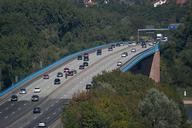Expansion Joint Retrofit - Box in Box
Like all products, expansion joints come of age and then increasingly create headache to their owners. Instead of a very comprehensive full replacement of an aged expansion joint, a retrofit can be a viable option, because it needs less resources and has lesser interference onto the bridge structure. For example, at the hand of the Kürnach Bridge (A7 Expressway), Maurer Söhne could implement a box-in-box solution. The retrofit was accomplished within 1 month, whereby a modular expansion joint consisting of 6 modules was replaced with one of 5 modules, while minimizing the interference into the bridge structure.
Media
Due to the high strain expansion joints display a limited lifetime, this becomes visible in displaying cracks and fractures at its steel structure. Now, instead of a complete replacement, some expansion joints can also be retrofitted, which means that the anchorage remains in the bridge structure. This method minimises the interference for the bridge structure and saves both costs and time.
When retrofitting an expansion joint, and depending on the type of the joint, there exist 4 possibilities:
- Retrofitting of a single seal joint by way of replacing the edge beam.
- Retrofitting of a two-seal joint into a single seal joint. This is possible when the displacements of a concrete superstructure fade away over the years.
- Retrofitting of a two seal expansion joint into a noise reduced wave type joint (MAURER XW1), which allows a displacement of up to 95 mm instead of the 65 mm which is the gap limit in Germany.
- Box in box retrofit in case of multi-seal modular expansion joints.
In case of the latter option no.4, the visible steel beams are placed on support beams. Now when the bridge deck expands, the expansion joint will become more "slender", and the expansion joints need space where to move into. Accordingly, joist boxes are foreseen into which these support beams can move, and for which the bridge deck has to provide the sufficient blockout space.
Box in box near the Biebelried Crossing
In case of a conventional replacement of an expansion joint, these joist boxes will be removed and replaced, including their anchorage. A faster, more economic option which in addition interferes less into the existing bridge structure is a retrofit in the way as it was accomplished at the Expressway Bridge near Kürnach, between the Biebelried Crossing and Würzburg-Estenfeld. Thereby, the old edge beams including of the joist boxes will remain in the existing bridge structure, while, an exact measurement of the geometry on site is taken, such that the new expansion joint exactly fit into the existing structure. Being "box in box", the new expansion joints make use of the existing space.
For each lane, the retrofit took about 4-5 weeks. Direction North the retrofit took place in May 2012, and direction South it was accomplished in May 2013. As a first step, the asphalt as well as the water proofing was removed at a length of 1 meter before and after the expansion joint. With the joist boxes now being accessible, their lid was cut off and all moving parts of the expansion joint were removed. The (old) joist boxes as well as the edge beams remained in the structure, and the superstructure of the bridge was not interfered with.
After at the inner side of the structure consoles for a support were welded, the new expansion joints were lifted into the existing bridge structure, including of their joist boxes and their inner sealing elements. After levelling, the expansion joint was welded with the existing edge beams. The two outer strip seals were inserted later.
A fully renovated corrosion protection
During the box-in-box retrofit, special attention was placed onto the corrosion protection. The corrosion protection of those parts which were not replaced was completely renovated. Thereafter, the opened part of the carriageway was waterproofed and asphalted.
No interference with existing structure
The big advantage of the box-in-box solution is that the existing bridge structure is not interfered with. This is of particular relevance when there is a prestressed carriageway deck, because these sensible areas remain untouched.
A further attraction of this box-in-box option also lies in the short time the retrofit takes. It is therefore also suitable as an accompanying measure, for example when the bridge deck is being renovated.
Such a short time for retrofit however only can be achieved if all works go hand in hand. At the Kürnach bridge this could be accomplished because both execution and coordination of all works were offered and supplied by Maurer Söhne.
References
Structure Types
- About this
data sheet - Product-ID
6377 - Published on:
04/07/2013 - Last updated on:
19/05/2017

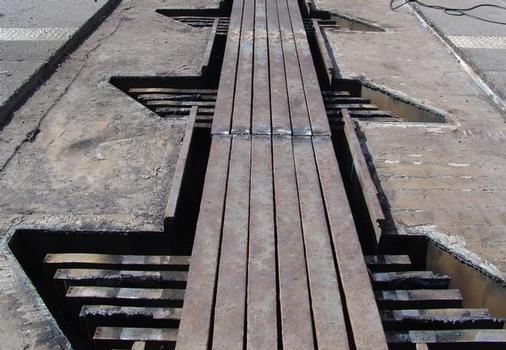
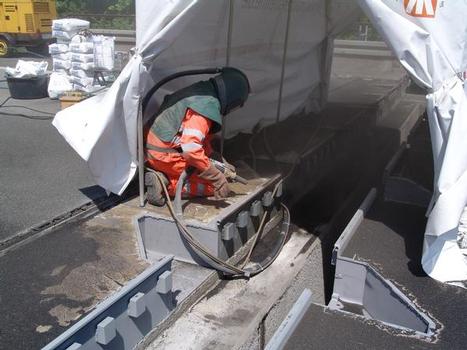
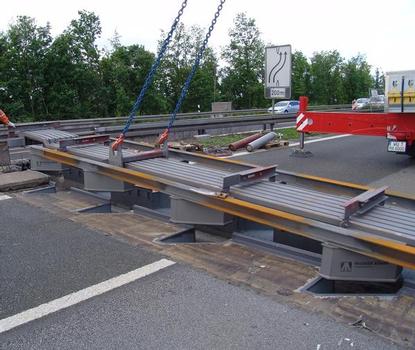
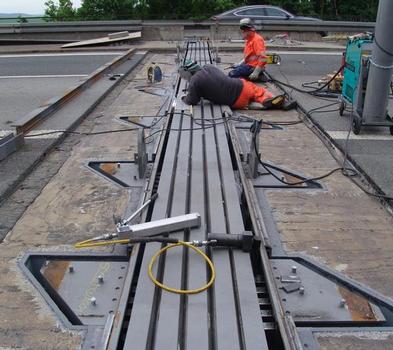
 MAURER SE
MAURER SE 
